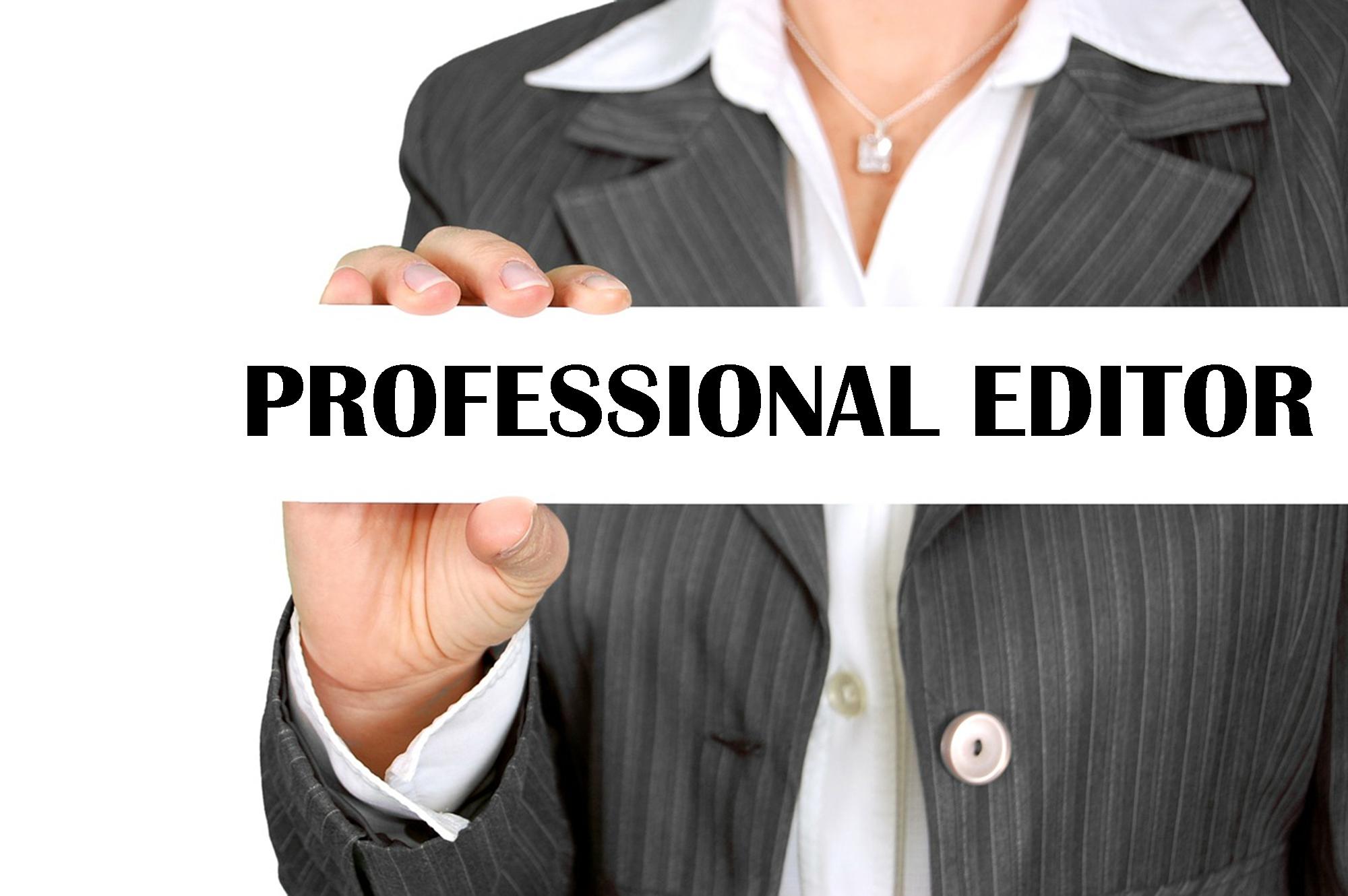 Many aspiring authors think they can’t afford to hire an editor. If your plan is to publish, then the truth is you can’t afford NOT to hire one.
Many aspiring authors think they can’t afford to hire an editor. If your plan is to publish, then the truth is you can’t afford NOT to hire one.
Anyone can call themselves an “editor,” yet not all editors are the same. There is no test or certification process. Be choosy when you hire one. Instead of looking for the cheapest rate, look for editors with experience and a proven track record and figure out how you can reduce your costs by doing as much self-editing as possible. While inexpensive, the retired English teacher down the street is not a professional editor.
Proofreaders are not editors. They check for typographical errors, missing words, formatting glitches. You will want to use a proofreader, but only when you have “proofs” ready to go to press. After you have a contract. After your publisher has approved your final version. After it’s gone to typesetting and layout. Don’t waste your money on a proofreader on your early drafts unless you’re too lazy to learn grammar, spelling, and punctuation.
And if you haven’t mastered the mechanics of the English language, then perhaps you have some work to do before your writing will be published. Imagine if Aaron Rodgers of the Green Bay Packers had hired someone to run laps, practice yoga, and do push-ups for him. I mean, all that really matters is if the quarterback knows the right call to play, right?
 If you want to play in the big leagues, then you need you to continue to train like a professional. You won’t get to call the play if you haven’t adequately trained. And few star football players are so arrogant they can’t see the value of a professional trainer. Continuing professional development is not an admission of inadequacy but a commitment to excellence.
If you want to play in the big leagues, then you need you to continue to train like a professional. You won’t get to call the play if you haven’t adequately trained. And few star football players are so arrogant they can’t see the value of a professional trainer. Continuing professional development is not an admission of inadequacy but a commitment to excellence.
When a writer submits a manuscript and hires someone else to magically transform rough, raw draft into coherent elegiac prose, it’s the same as my neighbor Bud down the street hiring the athletic trainer for the Pittsburgh Steelers. He isn’t interested in working up a sweat, changing his diet, or running drills. He’s only interested in being the star and getting the glory of the big win. Bud has as much chance of making it into the NFL league as writers who aren’t working toward improving their craft have of getting a book contract from Simon & Schuster.
 Editor’s don’t “fix” a writer’s work. Editors help the writer understand what the reader needs—to grasp their ideas, follow their reasoning or storyline, relate to the characters—and editors offer constructive criticism. They will suggest revisions for the writer to make.
Editor’s don’t “fix” a writer’s work. Editors help the writer understand what the reader needs—to grasp their ideas, follow their reasoning or storyline, relate to the characters—and editors offer constructive criticism. They will suggest revisions for the writer to make.
Many writers assume the editor at a publishing house will provide editorial services to an author. Unfortunately, most simply do not have time to do that anymore. Their role and responsibility is to acquire new intellectual properties and shepherd them into production. And they don’t offer a contract unless the sample chapter or full manuscript submitted for consideration demonstrates professionalism and craft. They’ll read through your final version and give you feedback on the overall package, but they simply can’t work as a developmental editor on your early drafts.
And agents aren’t usually editors. They will offer you a critique of your proposal and writing sample but they read with an eye as to the work’s potential for a sale. This kind of feedback is helpful, however, it is more diagnostic than prescriptive. In other words, an agent will tell you whether they think  your work is ready for publication but if not, they do not spend much time helping you figure out how to make it more so. They may refer you to editors whose work they trust and whose fees are paid by the author not the agency.
your work is ready for publication but if not, they do not spend much time helping you figure out how to make it more so. They may refer you to editors whose work they trust and whose fees are paid by the author not the agency.
We’ve all read enough self-published books by authors who could not tolerate editorial critique. It isn’t only the typos or formatting that is troubling; it’s the lack of quality in the content. Everyone needs an editor because no one can see their own mistakes or shortcomings. If they could, they would correct them.
The value added by an editor to the writer is at the big picture level: character development, narrative arc, pacing, emotional resonance, point-of-view, voice, and projected reader responses. Figuring out what the reader needs to know and when they need to know it isn’t easy. An editor helps a writer discern this.
When you hire an editor, you will want to get the biggest bang for your buck. Instead of paying top-dollar for an editor to do things you could do yourself, here’s a list of items which can help you save money and improve your copy before you seek a professional editor.
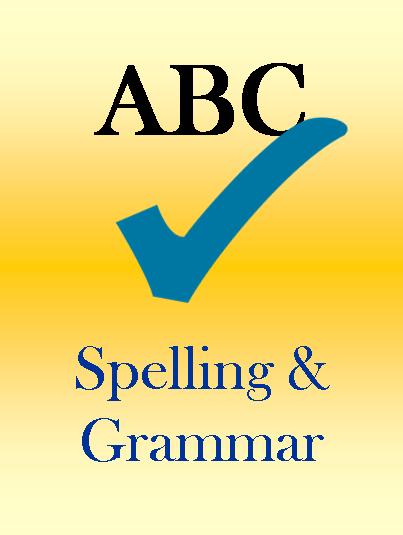 Use Spelling & Grammar in Word. On the top navigation bar on your Word document, click on the Review tab. Under the Review tab to the far left is the ABC icon with a check mark in the Proofing section. Click on the icon and it will walk you through your document for potential errors you can correct.
Use Spelling & Grammar in Word. On the top navigation bar on your Word document, click on the Review tab. Under the Review tab to the far left is the ABC icon with a check mark in the Proofing section. Click on the icon and it will walk you through your document for potential errors you can correct.
 Pay attention to those squiggly lines underneath words or phrases in your document. Word is trying to help you edit yourself. It is asking you to check the spelling or grammar. Check it. If you’re not sure of a word, click on the Define (or Research) button to the right of the ABC Spelling & Grammar button. Notice there is also a Thesaurus button. Tools at your fingertips.
Pay attention to those squiggly lines underneath words or phrases in your document. Word is trying to help you edit yourself. It is asking you to check the spelling or grammar. Check it. If you’re not sure of a word, click on the Define (or Research) button to the right of the ABC Spelling & Grammar button. Notice there is also a Thesaurus button. Tools at your fingertips.
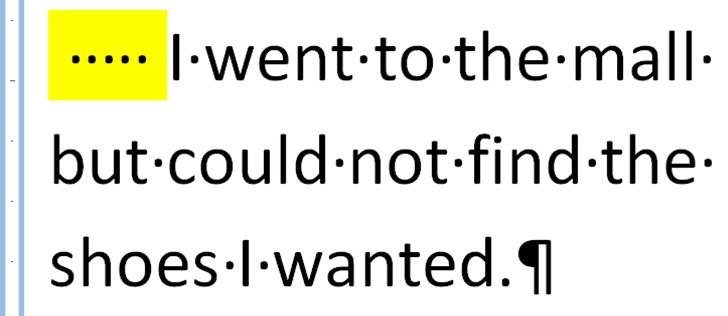 Stop using the space bar for paragraph indents. If you are doing this, you are likely over the age of 60 and learned to keyboard on a typewriter, not a word processor. You may not realize it, but you are introducing code errors into the document which will need to be manually corrected. There’s no easy fix for this one. Delete the spaces. A new paragraph is created every time you hit the enter key. Remember how you reached over to your right and swung that carriage return and then bump, bump, bump, bump, bump on the space bar? If you’re using a typewriter to submit your book manuscript then you’ll need to hire someone else to create a document in a word processing program. You aren’t still using white-out, are you? Time to break old habits. How many of you still hit the backspace key to delete entire words back to the one letter you mistyped? Put the cursor where you want to make the change and then you don’t have to retype the entire sentence. Learn how to use the Ctrl and Shift keys together with the up, down, left and right arrows for capturing words, lines and paragraphs to delete, correct or move. High school typing teachers clearly had a much greater impact than you imagined.
Stop using the space bar for paragraph indents. If you are doing this, you are likely over the age of 60 and learned to keyboard on a typewriter, not a word processor. You may not realize it, but you are introducing code errors into the document which will need to be manually corrected. There’s no easy fix for this one. Delete the spaces. A new paragraph is created every time you hit the enter key. Remember how you reached over to your right and swung that carriage return and then bump, bump, bump, bump, bump on the space bar? If you’re using a typewriter to submit your book manuscript then you’ll need to hire someone else to create a document in a word processing program. You aren’t still using white-out, are you? Time to break old habits. How many of you still hit the backspace key to delete entire words back to the one letter you mistyped? Put the cursor where you want to make the change and then you don’t have to retype the entire sentence. Learn how to use the Ctrl and Shift keys together with the up, down, left and right arrows for capturing words, lines and paragraphs to delete, correct or move. High school typing teachers clearly had a much greater impact than you imagined.
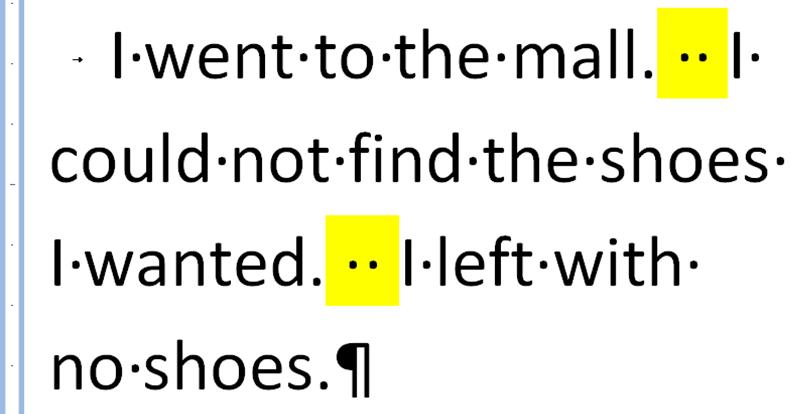 Use only one space after a period. Use the “replace” button found in the navigation bar to the right in the section on editing. In the “find” field, insert a period with two spaces after it, and in the “replace” field, insert a period with only one space. Again, if you’re still using two spaces after a period, you are dating yourself as pre-computer era.
Use only one space after a period. Use the “replace” button found in the navigation bar to the right in the section on editing. In the “find” field, insert a period with two spaces after it, and in the “replace” field, insert a period with only one space. Again, if you’re still using two spaces after a period, you are dating yourself as pre-computer era.
Punctuation goes inside the end quotation mark, not after it. Again, use the “replace” function to help you find those errors. Search for ”, and replace with ,” in your document. Likewise, search for ”. and replace with .”
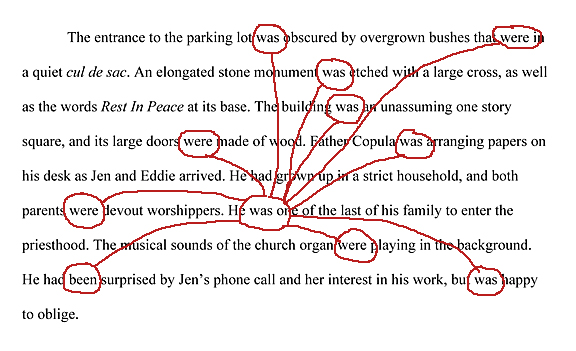 Find the copula spiders in your copy. What is a copula spider? It occurs when a writer uses the verb ‘to be’ so many times on a page that you can circle all the instances, connect them with lines and draw a spider. There’s nothing grammatically wrong with using helping verbs and participial verb forms, but if you use them all the time your prose is flatulent and flaccid. Douglas Glover’s Attack of the Copula Spiders (Biblioasis, 2012) offers a series of essays on writing craft worth your while. Once you’ve found the copula spiders, then work on replacing them with active verbs.
Find the copula spiders in your copy. What is a copula spider? It occurs when a writer uses the verb ‘to be’ so many times on a page that you can circle all the instances, connect them with lines and draw a spider. There’s nothing grammatically wrong with using helping verbs and participial verb forms, but if you use them all the time your prose is flatulent and flaccid. Douglas Glover’s Attack of the Copula Spiders (Biblioasis, 2012) offers a series of essays on writing craft worth your while. Once you’ve found the copula spiders, then work on replacing them with active verbs.
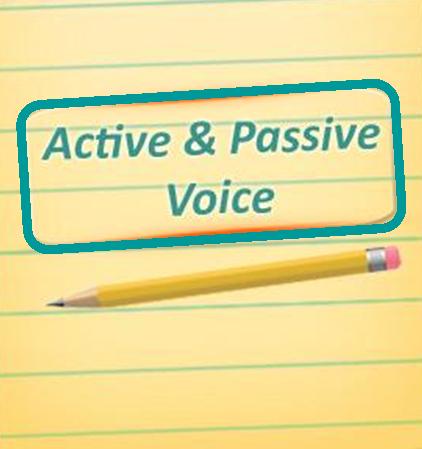 Eliminate passive voice. It weakens your writing. It obscures responsibility for action. It creates victims instead of actors. You’re not sure what it is? Take the passive voice test. There is nothing grammatically wrong with passive voice either and there may be times when you use it intentionally. For example, you may not know, or you don’t want the reader to know yet, who is responsible for the action. Or you may want to focus on the victim, not on who or what caused the victimization. Because passive verb constructions have become part of everyday speech in America, we rarely notice it in our own writing. Lawyers, politicians, and academics are notorious for using passive voice as a way to obfuscate meaning and minimize accountability. Active voice is stronger, clearer, and resonates with readers. Active verbs bring your story life.
Eliminate passive voice. It weakens your writing. It obscures responsibility for action. It creates victims instead of actors. You’re not sure what it is? Take the passive voice test. There is nothing grammatically wrong with passive voice either and there may be times when you use it intentionally. For example, you may not know, or you don’t want the reader to know yet, who is responsible for the action. Or you may want to focus on the victim, not on who or what caused the victimization. Because passive verb constructions have become part of everyday speech in America, we rarely notice it in our own writing. Lawyers, politicians, and academics are notorious for using passive voice as a way to obfuscate meaning and minimize accountability. Active voice is stronger, clearer, and resonates with readers. Active verbs bring your story life.
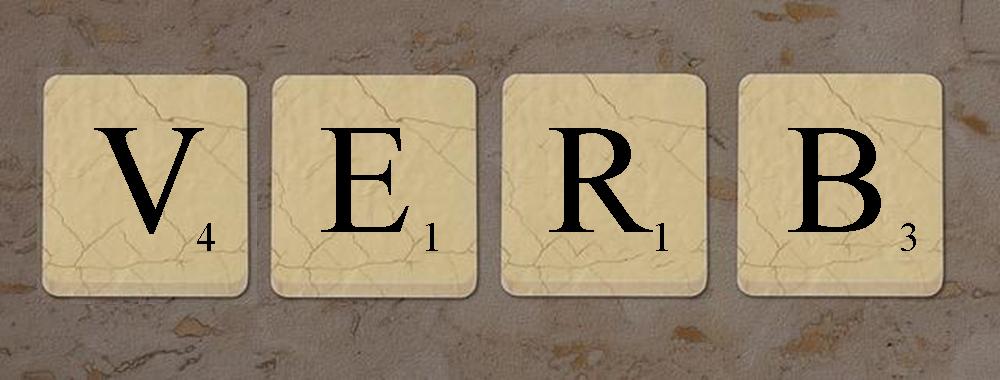 Check your verb tenses. Control your shifts in time. Maintain consistency to create the sense of narrative time moving forward. You don’t want to have one moment described in two different tenses in the same sentence. Change in verb tense signals to readers a shift in time and inconsistency causes confusion. Generally, writers maintain one tense for the narration and indicate changes in time frame by changing tense relative to that primary tense. Usually the verb tense is simple past. If you are referring to future events you’ll need the helping verbs of “will” or “be going to” to indicate a temporal shift forward. If you are referring to events which occurred prior to this point in the narration, then use past perfect which uses the helping verb of “had” as in “they had walked.” If you use flashbacks (past) or foreshadowing (future), checking your verb tenses will eliminate some of the criticism you receive from an editor regarding the coherence and flow of your manuscript.
Check your verb tenses. Control your shifts in time. Maintain consistency to create the sense of narrative time moving forward. You don’t want to have one moment described in two different tenses in the same sentence. Change in verb tense signals to readers a shift in time and inconsistency causes confusion. Generally, writers maintain one tense for the narration and indicate changes in time frame by changing tense relative to that primary tense. Usually the verb tense is simple past. If you are referring to future events you’ll need the helping verbs of “will” or “be going to” to indicate a temporal shift forward. If you are referring to events which occurred prior to this point in the narration, then use past perfect which uses the helping verb of “had” as in “they had walked.” If you use flashbacks (past) or foreshadowing (future), checking your verb tenses will eliminate some of the criticism you receive from an editor regarding the coherence and flow of your manuscript.
Avoid overwriting. Going over the same passage and fretting about word choices won’t help. Don’t use fifty cent words when nickel ones will do. Avoid purple prose. Ornate, flowery, or melodramatic language draws attention to the writing itself and distracts from the substance of what you’re writing about. Purple prose is characterized by the abuse of adjectives, adverbs, zombie nouns, and metaphors. If it sounds “writer-ly,” rewrite it in simple straightforward language. The old camp song, “Show me the way to go home,” becomes “Indicate the way to my habitual abode,” in purple prose.
 Follow standard format for a book manuscript. Use one inch margins on all sides. Double-space the entire text. Do not insert extra line spacing between paragraphs. Half-inch tab for paragraph indents. Use Times New Roman 12 font. Do not use any fancy fonts or switch colors. Paginate with page 1 on the first page of the first chapter. Do not insert any images in the body of the text. Follow the style rules of a Manual of Style (Chicago, MLA or APA). Pick one style guide and use it consistently. You may not know all the rules to the style guidelines, but you learn them as you use them. When should a word be capitalized? Look it up. Apostrophe errors, missing hyphens, unnecessary commas. When in doubt, double-check.
Follow standard format for a book manuscript. Use one inch margins on all sides. Double-space the entire text. Do not insert extra line spacing between paragraphs. Half-inch tab for paragraph indents. Use Times New Roman 12 font. Do not use any fancy fonts or switch colors. Paginate with page 1 on the first page of the first chapter. Do not insert any images in the body of the text. Follow the style rules of a Manual of Style (Chicago, MLA or APA). Pick one style guide and use it consistently. You may not know all the rules to the style guidelines, but you learn them as you use them. When should a word be capitalized? Look it up. Apostrophe errors, missing hyphens, unnecessary commas. When in doubt, double-check.
Make a list of errors you are prone to making and learn to correct these mistakes. You will still make some mistakes again and again. But if you learn what mistakes you keep repeating, you’ll get better at flagging them yourself. As an editor I often read the first ten pages and create a list of common errors for the writer to address. In a 300 page manuscript, it would be quite costly for an editor to catch and correct each instance. There are many editors who would be happy to charge you to do so, but as an author’s advocate who understands the majority of authors earn less than a living wage, I’d rather help writers learn to do it themselves. If I “fix” the problem of inserting an extra line space between paragraphs, the writer gains nothing but a big bill. If the writer has to manually eliminate each and every time they hit the enter key twice, they break the old habit and save some dollars to put toward their publicity and marketing.
To be honest, if you self-edit your work before you give it to an editor, then you’re likely to get more constructive criticism. And I recommend you leave margin notes for your editor. If you want to know whether a passage is convincing, if the evidence warrants your conclusion, or if the visual description is sufficiently vivid, you’ll get more valuable feedback that will help you hone your craft. Letting your editor know what concerns you have regarding your manuscript will help keep your costs down. For example, if you know that there are missing citations or think your transitions aren’t working and you’ll address those at a later date, but mostly want the editor to focus on character development or plot structure, your editor appreciates you identifying the scope of editorial feedback you seek. Getting editorial feedback on whether you have a compelling story and delivered it in a way that readers will grasp your intended meaning is more important to a writer than catching typographical errors.
Contact Swenson Book Development LLC if you’re looking for an editor for your manuscript. We’d be happy to discuss our services and fees.

Thanks for this excellent article and review of self-editing basics. Gratitude to you and Swenson Book Development for helping me develop my writing. I know too many self-published books with engaging stories or topics but poor execution. With sloppy, wordy writing or too many “to be” spiders, my attention wandered and I couldn’t read more. I suggested to some of these writers that they get a fully professional editor, not a buddy, to read their work, but most resisted because they didn’t want anyone influencing their creative work. I understood, but your influence on my work made me a better and more creative writer.
Thanks for your comment here, Elaine. I’ve heard similar fears about editors influencing their creative work. The music they listen to, the books they read, the art they see, and the environment has greater influence on an author’s creativity. Helping an author fully execute their creative ideas is always an editor’s goal.
I keep putting this off. But sooner or later it will come down to getting an editor. I’m not afraid of an editor influencing or putting a knife to my creative work. I’m mostly afraid an editor, especially a structural editor, is going to find so much wrong with my manuscript that both the editor and I will be drowning ourselves in daiquiris.